Course Overview
This course is being designed for a Grade 8/9 split ELA class within a quad-split ELA classroom. The central theme for the course is Identity – “All That I Am – In Search of Self.” The students will explore this theme through the novel The Outsiders by S.E. Hinton. By the end of the unit, the students will be able to understand and respond to these questions with reference to the novel and a variety of grade-level texts and make connections to their personal lives and experiences while defining their own sense of identity. The course will have students work through 8 lessons to read the novel and explore the idea of identity – their own and the characters within the novel. The course will take 6 to 8 weeks to complete.
The Learners
This specific course is being designed for Grade 8 and 9 students I will be teaching in September 2023. It is important to know that these students learn in a four-grade split classroom ranging from grades 6 to 9. There are 15 students in the class – 2 Grade 6, 4 Grade 7, 4 Grade 8, and 3 Grade 9. Together, this is a diverse group of students, with some students requiring specific learning needs – IIPs, Individual Outcome Plans (IOP), Collaborative Team Plans (CTP), accommodations and modifications, and vision and speech supports.
The grade 8 and 9 group of 7 students have a range of abilities. One student in the group is diagnosed as having Diverse Needs and requires support for receptive and responsive language. We have and will continue to use technology to support these needs throughout this unit (ie. video, discussion, artwork, etc.) Students within this group have a range of reading and writing abilities. At least one student is achieving well below grade level, requiring alternative ways of accessing texts and content and demonstrating understanding, and the others achieve at or above grade level. Five students live outside of the school community on farms and are bused into school.
Course Format
This course will be a blended learning format and include synchronous and asynchronous components. Students will be at school for both, either in the classroom or in alternative workspaces. Synchronous activities will be face-to-face with the teacher and their classmates and will include discussions and whole group lessons and instructions, depending on the needs of the students and the nature of the content. The course will include the following unit lessons:
Lesson 1 – Who Am I? – Exploring the Theme of Identity
Lesson 2 – Setting the Stage for the Novel – The Outsiders
Lesson 3 – Chapters 1 to 3: Characterization
Lesson 4 – Chapters 4 to 6: Choices and Consequences
Lesson 5 – Chapters 7 to 9: Symbolism
Lesson 6 – Chapters 10 to 12: A Closer Look at Theme
Lesson 7 – Identity Final Project
All lessons will involve both asynchronous and synchronous activities and tasks, and students will have opportunities to work independently, in partners, in small groups, and as a whole class.
Course Tools
For all the classes I teach, I use Microsoft Teams as the format for the online learning components of my blended learning environment. This is the platform chosen by my division and familiar to the students I teach. Therefore, I have decided to build my course in Teams, using Class Notebook to house the content of the course.
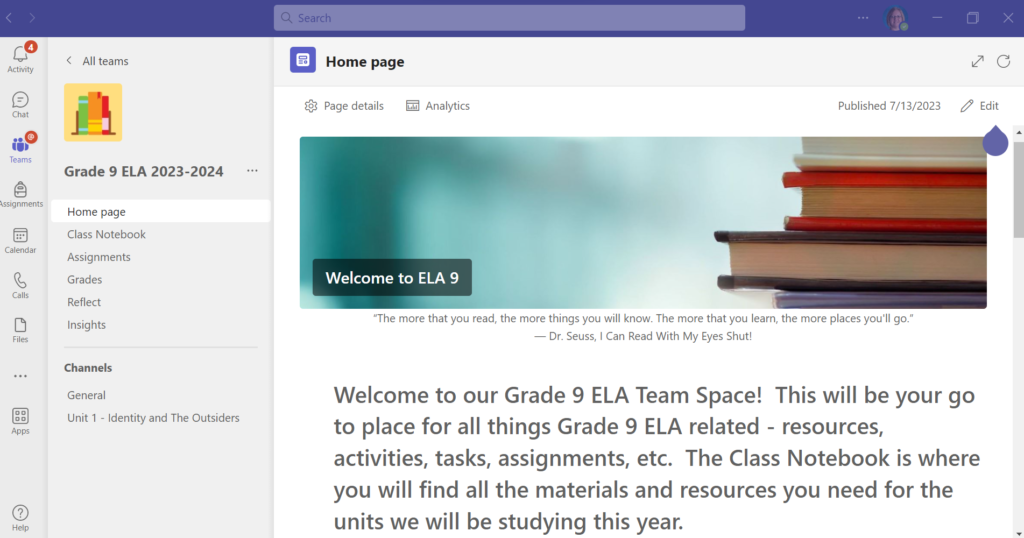
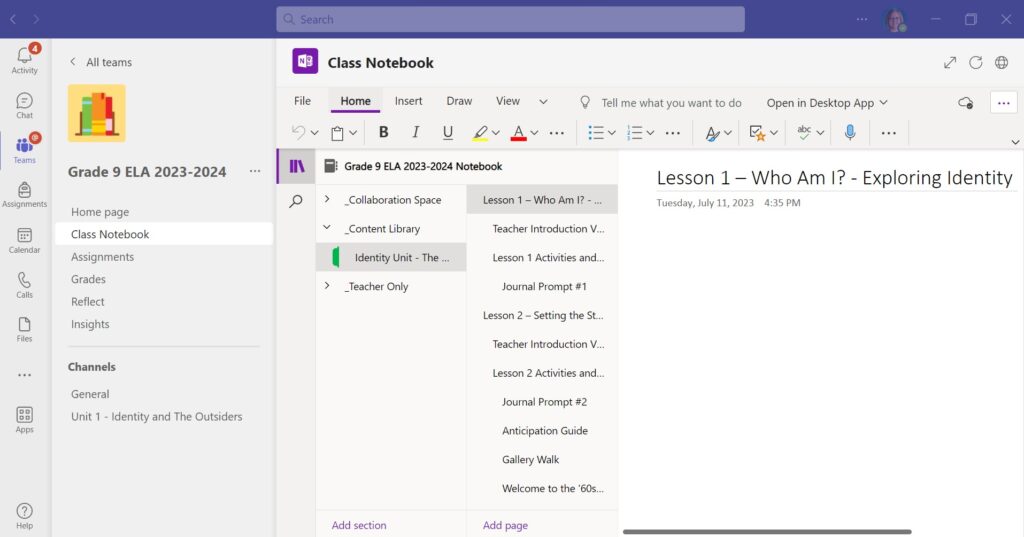
I will use the various features of Teams during this course such as Teams Chat, Assignments, and Channels to communicate with students and have students submit their work. Class Notebook also has Immersive Reader and Dictate features to support student learning needs, and it enables me to review student work and progress within the course lessons and assignments.
Course Toolset
While Microsoft Teams will be the main platform for this course. There are a number of other tools I will use. The following is a slideshow of the other tools the students will use throughout the course.
Course Content and Learning Objectives
Content
This unit will focus on the theme of identity through the study of the novel The Outsiders by S.E. Hinton. The students will explore the idea of identity and who and what influences who we are. Through the study of the novel, students will reflect upon how influences, choices, and the environment impacted the character’s identities and apply this understanding to their own sense of who they are. The novel study will also enable us to look closer at the impact of stereotyping and assumptions on our identity. The students will end the unit with a choice project related to their personal identity and connecting it with the characters in the novel. For this unit, we will focus on the following theme questions:
- From where does our sense of identity come?
- What makes each person unique and interesting?
- How do people express their individuality?
- How do people change as they journey through life?
- How do we keep our self-identity yet, at the same time, become
part of a community?
Learning Outcomes
As this is a split-grade unit, I have included the main outcomes for Grades 8 and 9. Numerous ELA outcomes will be covered and assessed throughout the entire unit; however, the following are the focus outcomes of the Lesson I will be designing for this assignment.

Assessment Strategies
Assessments throughout the unit will be both formative and summative and provide a variety of ways for students to receive feedback and demonstration their knowledge and understanding.
Formative Assessments
Formative assessments will involve the exploration and knowledge-building activities the students will work through during their asynchronous work and tasks. These tasks will support students in their participation and completion of their summative assessments. Formative assessments will include:
- Collaboration boards
- Anticipation guides
- Jigsaw activities
- Nearpod lesson activities
- Video responses using Edpuzzle
- Journal responses
- Reading comprehension questions
Summative Assessments
Summative assessments will occur during and after the synchronous component of this unit, where students will have an opportunity to share, synthesize, and build on the knowledge they created during their asynchronous activities and tasks. The summative assessments will include:
- Discussions and Lesson and Discussion Reflections – criteria will be created with students and discussions will be assessed. Students will also complete a lesson and discussion reflection and a self-assessment.
- “Big” Idea Questions – Each lesson will conclude with a big question students will answer related to the novel, the focus of the lesson, and the unit theme. Students will have a choice to complete this as a written assignment or to record their responses on Flipgrid. These questions will be completed after discussions.
- Lesson Final Tasks – each lesson will have a summative task students will be responsible for. This will include tasks related to character development, symbolism, and theme.
- Quizzes and Tests – students will have quizzes and a final test for the novel.
- Final Project – the final project for this unit will involve a choice board and will require students to synthesize their learning and understanding of the theme of identity in relation to the novel and themselves.
All assessments will be modified to meet the needs of the students. They will have options to record, write, or create visual representations of their responses. Also, the diversity of assessments used will also help support the needs of the students.
Considerations for Common Concerns
While there are numerous concerns related to moving to a blended/online learning environment and format, the following are some concerns I may encounter and be able to address.
Attendance: Attendance seems to be a common concern across all divisions and among educators. My building is no exception. This past year, we have seen students’ regular and consistent attendance drop for various reasons – physical illness, mental illness, family obligations, vacations, snow days, inability to get to school (ie. bus cancellations), etc. Providing content and communication online gives students the opportunity to access the content, lessons, and communications while away. Most students have the ability to access Teams and online resources through a phone, whether their own or a parent’s. This will help students stay in the loop and be prepared for our face-to-face interactions. It is my hope that providing an online component to our class will help address the issues of absenteeism in my class.
Tech Issues: Our school is due for a refresh next year, and we should be able to maintain a one-to-one ratio for access to computers. However, I always find there are issues with technology – from computer batteries not maintaining a charge, to not being able to access online learning tools because of our division’s restrictions for students. While this is improving, it is something that needs to be considered when moving students to an online format. Because I have chosen to offer a blended learning environment, some of these issues can be dealt with and mitigated face-to-face with students. But, these issues can take time away from our valued instructional and discussion time in class.
Student Independence: Working online requires a level of independence on the part of the students – from navigating the technology to working through, analyzing, and synthesizing content independently. There are diverse levels of abilities and expertise among the students, and it will be important to recognize, support, and capitalize on these. It will be important to establish expectations for students when working independently and online and vital to ensure students have networks of individuals they can access for technological and content support such as peer experts. Students will also be made aware of and encouraged to use tools to support their independent learning such as Immersive Readers and speech-to-text tools. I am hoping that multiple ways to access content (ie. print novels and audiobooks) and demonstrate their learning will support the diverse needs of my students and foster the independence they will need to work online. Furthermore, I am hoping that using an online platform familiar to my students will also help students navigate the content with some ease and independence.
Course Rationale
I currently teach English Language Arts to a grade 6/7/8/9 split class. With only a 1 hour teaching period every day, this often poses challenges of time restraints on teaching and learning time and teacher availability for each of the grade levels. While I attempt to group grades for units, I still end up teaching a minimum of two grade groupings each period. Within these grade groupings, there are also many diverse learning styles and needs.
Being able to develop units, lessons and learning activities in a blended/online format enables students to access content without direct teacher-student interaction. Students are able to read, view, and listen to texts, complete activities related to texts, and develop their comprehension and knowledge about the content. This enables me and the students to use our face-to-face time to have deeper conversations and
discussions, question, build on previous and acquired knowledge and create new understandings and knowledge related to the content. Having a blended/online learning environment where students can access content online and have face-to-face interactions, also enables me to spend more time with each group during face-to-face learning to support, facilitate and engage with the students and content and assess student progress and understanding.
A blended/online learning environment also enables me to meet the diverse learning needs and styles of my students. Providing multiple ways to access content and demonstrate learning will meet students where they are at and capitalize on their strengths while supporting their learning needs.
Link to ADDIE Template
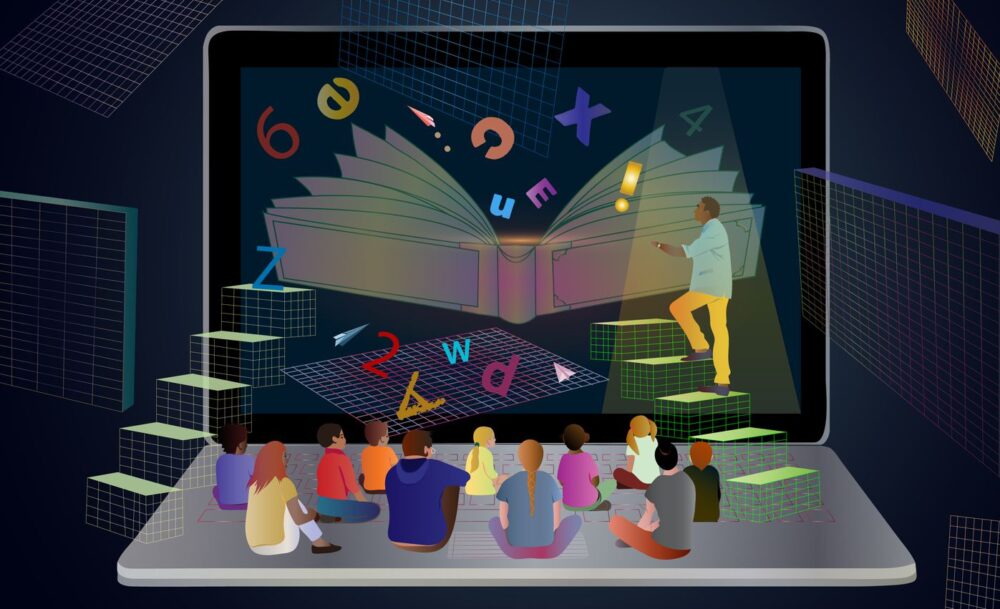

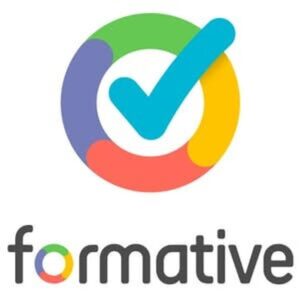
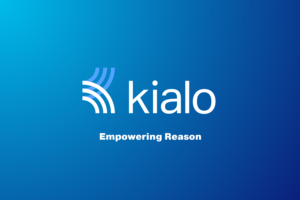
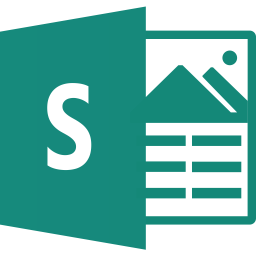


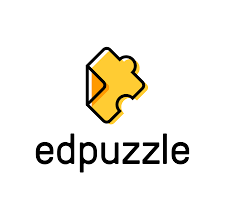
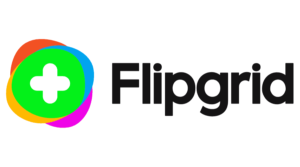


Tammy! I love this book and am excited someone chose a unit I could potentially use one day. I’m eager to see all the ways you incorporate these great tech tools and sites. I have never used TEAMS before and understand the choice in using something consistent with your current methods, what areas do you feel TEAMS lacks in comparison to other platforms? Or do you love it?
Hi RoxAnne! I didn’t really like Teams at first, but I delved into with a Microsoft course the summer after we started using it. There are lots of great features that I find useful with students (ie. Immersive Reader and Dictate in Class Notebook). I also like the fact that everything is really in one place and students don’t need other emails to access the platform. There is some ease of access to that and it often saves time. They done some upgrading in the Assignments and marking features as well.
I haven’t used many other platforms to offer comparison, but Teams has grown on me, and it is a regular part of my classroom environment.
Hi Tammy. Great course profile! I love the book “The Outsiders” and used it as a novel study when I was teaching the same grades as you. Every student could relate to that book. It has stood the test of time with the universal theme of belonging.
Your profile was a great help to me when I was making mine. You will see that I copied your idea of the slideshow. Thanks for the inspiration!
Hi Laura! Glad it was helpful! I was trying to figure out a way to get all the tech tools listed and started looking outside of WordPress. Then found the slideshow feature! Took a bit of tweaking at first but I like how it turned out. Look forward to reading over your course profile.
Hi Tammy! I like how responsive your course profile is to the diverse needs in your classroom. A four grade level split sounds like a balancing act and that technology can help to create that balance. I also appreciate the wide-variety of formative assessments you include. Sometimes educators can place too much emphasis on summative assignments, not leaving enough room for formative.
I look forward to seeing your course develop! Thanks for sharing!
Hi Sarah! Thank you! Yes, it is definitely a balancing act and technology has given me ways to be able to manage it. I find that formative assessment gives me a good idea where students are at so that I can support them upfront before heading in summative tasks. I often need my students to be able to complete tasks independently and formative assessment helps me prep them for these final tasks. I can give them the tools and support they need.
This is really detailed, Tammy! I really enjoyed looking through your work and seeing how you would approach a quad-grade classroom. Something I found useful when I taught split grades were hyperdocs! I found a unit for the Outsiders that is completely editable if you make a copy that you may (or may not) find useful. Here is the unit as a hyperdoc. I use hyperdocs to make end of unit choice boards as well! Sora has an audiobook version of the book as well which may be a useful option for a few of your students. Sora is a paid for app, but I believe SECPSD pays for this already. I look forward to seeing how you utilize Kialo since I have not heard of this resource!
Thanks Kate-Lynn!!! I will be sure to have a look at the hyperdoc. I have dabbled in this area before and have developed a choice board in a similar format. SECPSD does pay for Sora, however the number of books available is limited. So I do find other ways to access an audio version of the book.
Tammy,
Your course looks so well thought out & engaging for your students at their grade level. I see that you chose Microsoft Teams as your learning platform, it really looks like you have taken the time to navigate how it works & along with all the perks. I used it briefly for a 5 month time span during covid & really struggled to figure it out. However, if it is something that is used within your division then I think there is great importance & value in exploring it & taking advantage of already having access to it within your classroom. I look forward to hearing more from you through this course!
– Kennedy
Hello Tammy,Your course profile is very accommodating to the variety of needs in your classroom, which I appreciate. I value the vast range of formative evaluations you use. Summative assessments can occasionally receive too much attention from teachers, leaving little time for formative work. I’m eager to watch how your course progresses! I appreciate you sharing.
Hi Suruchi! I agree with you about formative and summative assessments. I find that I often get more sense of where my students are at with formative assessment opportunities. This helps me support them with the summative assessment tasks upfront so they are able to work more independently on the tasks. It is an area I continue to work on every year.
Wow Tammy! This is so detailed. I like that you are breaking norms with your use of TEAMS. All of our students also automatically have accounts at our school, and it is installed on our computers so I can see how it could be very accessible!
I have used Teams before for professional learning groups. The trickiest thing for me was learning navigation (DON’T PUSH THE BACK BUTTON!). Otherwise, I really like the file storage and the notebook. This is a great book, and it looks like you have a great unit under development, especially with your careful consideration of your learners. Best of luck in your continued planning!
Thank you Miranda! Teams has been a work in progress for me. I have used it to teach my muli-grade class since Covid. Every year I develop my knowledge and use of it. Students in my class have become very familiar with the format and platform. However, this class is giving me the opportunity to dig in even more and see what I can do with it. The Class Notebook has been a game changer for my class. It almost becomes my lesson planner as I build units and lessons for my classes. They do keep improving it all the time, and I am excited to use it to build my course for the class assignment.